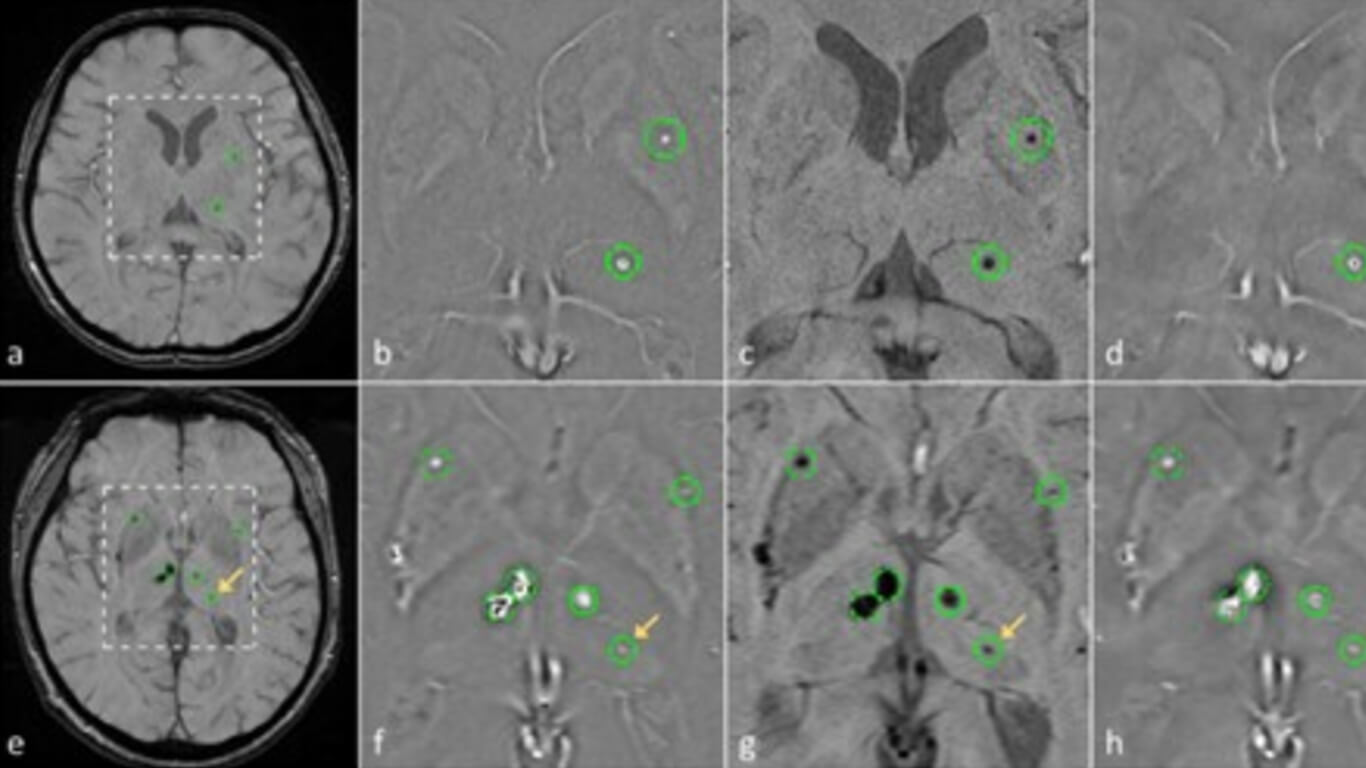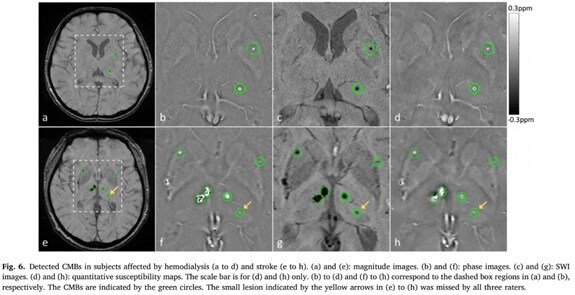
Cerebral microbleed detection using Susceptibility Weighted Imaging and deep learning
By: Karen Holzberger, President & CEO of SpinTech MRI
Author(s): Saifeng Liu a,* , David Utriainen a,b , Chao Chai c , Yongsheng Chen a,d , Lin Wang a , Sean K. Sethi a,b , Shuang Xia c , E. Mark Haacke
Journal: NeuroImage
Published: 2019
Read Full Paper: https://www.sciencedirect.com/science/article/abs/pii/S1053811919304380
Abstract

Detecting cerebral microbleeds (CMBs) is important in diagnosing a variety of diseases including dementia, stroke and traumatic brain injury. However, manual detection of CMBs can be time-consuming and prone to errors, whereas the current automatic algorithms for CMB detection are usually limited by large number of false positives.
Method
In this study, we present a two-stage CMB detection framework which contains a candidate detection stage based on a 3D fast radial symmetry transform of the composite images from Susceptibility Weighted Imaging (SWI), and a false positive reduction stage based on deep residual neural networks using both the SWI and the high-pass filtered phase images. While the SWI images provide exquisite sensitivity to the presence of blood products, the high-pass filtered phase images enable the differentiation of diamagnetic calcifications from paramagnetic microbleeds.
The deep learning model was trained using 154 data sets, and the best models were selected using 25 validation data sets. Finally, the models were tested using 41 cases, including 13 hemodialysis cases, 9 traumatic brain injury cases, 9 stroke cases and 10 healthy controls. Using 3D SWI and high-pass filtered phase images as input, the best model led to a sensitivity of 95.8%, a precision of 70.9%, and 1.6 false positives per case.
Conclusions
This model achieved similar performance to the most experienced human rater and outperformed recently reported CMB detection methods. This study demonstrates the potential of applying deep learning techniques to medical imaging for improving efficiency and accuracy in diagnosis.

